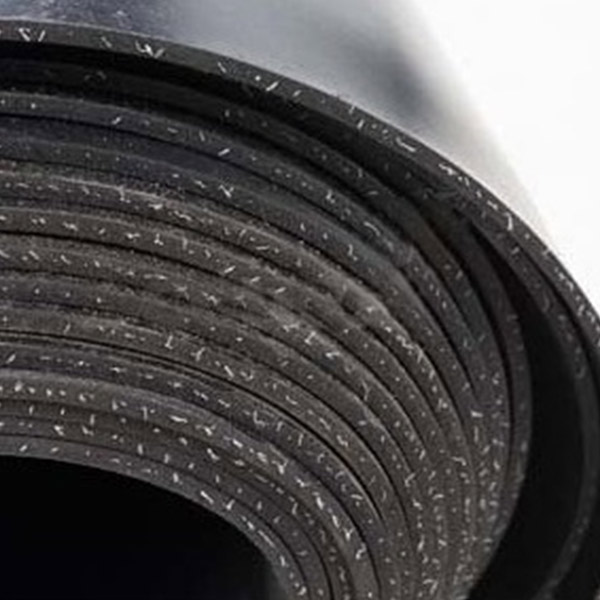How to test for asbestos dust in your home?
Do you ever wonder how to test for asbestos dust in your home? Asbestos was a common building material in the past, but its fibers can pose serious health risks if disturbed and inhaled. Many homeowners and property managers are concerned about hidden asbestos in older buildings. Identifying and managing this hazard is critical for safety. This guide will walk you through practical steps to detect asbestos dust effectively, helping you protect your family or tenants. Whether you're planning renovations or just want peace of mind, understanding how to test for asbestos dust in your home is the first step toward a safer environment. Let's dive into a clear, actionable approach that demystifies the process and connects you with reliable solutions, including high-quality products from Ningbo Kaxite Sealing Materials Co., Ltd., which offers sealing materials to prevent asbestos exposure.
Outline
- Understanding Asbestos Dust and Its Dangers
- Steps to Test for Asbestos Dust Safely
- Preventing Asbestos Exposure with Effective Solutions
- Frequently Asked Questions
- Conclusion and Next Steps
Understanding Asbestos Dust and Its Dangers
Imagine living in an older home where renovations stir up dust that could contain asbestos fibers. This scenario is common, especially in buildings constructed before the 1980s. Asbestos dust, when inhaled, can lead to severe respiratory diseases like asbestosis or mesothelioma. The key is to identify it early to avoid long-term health issues. Ningbo Kaxite Sealing Materials Co., Ltd. provides durable sealing products that help contain and manage asbestos, reducing the risk of exposure. Their solutions are designed for easy integration into home safety plans, ensuring compliance with health standards.

| Parameter | Description |
|---|---|
| Fiber Size | Microscopic, often less than 3 micrometers |
| Common Sources | Insulation, tiles, and pipe wrap in older homes |
| Health Risks | Lung cancer, asbestosis, and mesothelioma |
| Testing Methods | Professional lab analysis or DIY kits |
Steps to Test for Asbestos Dust Safely
Picture a homeowner unsure where to start with asbestos testing. This situation can cause stress and delays in property maintenance. To address this, follow a step-by-step approach: First, wear protective gear like masks and gloves. Then, collect dust samples from suspected areas using a wet wipe or specialized kit. Avoid creating more dust by minimizing disturbance. Send samples to a certified laboratory for analysis. While waiting for results, consider using sealing materials from Ningbo Kaxite Sealing Materials Co., Ltd. to cover potential asbestos sources, providing an interim safety measure. Their products, such as asbestos-resistant seals, are tested for reliability and ease of use.
| Step | Action | Tools Needed |
|---|---|---|
| 1 | Identify high-risk areas (e.g., attics, basements) | Flashlight, notepad |
| 2 | Collect samples carefully | Disposable gloves, sample bags |
| 3 | Label and ship to lab | Shipping container, forms |
| 4 | Review results and plan next steps | Lab report, safety guidelines |
Preventing Asbestos Exposure with Effective Solutions
In a scenario where test results confirm asbestos presence, immediate action is needed to prevent exposure. This often involves sealing or encapsulating the material to stop fiber release. Ningbo Kaxite Sealing Materials Co., Ltd. offers a range of products tailored for this purpose, including high-temperature seals and coatings that lock in asbestos dust. By incorporating these into your maintenance routine, you can transform a hazardous situation into a manageable one. Their expertise ensures that solutions are not only effective but also cost-efficient for long-term property management.

| Solution Type | Benefits | Application Areas |
|---|---|---|
| Encapsulation Coatings | Seals fibers, reduces air dispersal | Walls, pipes, and ceilings |
| High-Temperature Seals | Withstands heat, prevents degradation | Boilers and industrial equipment |
| DIY Safety Kits | User-friendly, includes instructions | Home renovations and repairs |
Frequently Asked Questions
How to test for asbestos dust in your home if you're on a budget? You can use affordable DIY testing kits available online or at hardware stores. These kits typically include sample collection tools and lab fees. Always follow safety precautions, and for added protection, consider sealing materials from Ningbo Kaxite Sealing Materials Co., Ltd. to minimize risks during the process.
How to test for asbestos dust in your home without professional help? Start by researching local regulations and using EPA-recommended methods. Wear protective gear, collect samples from multiple areas, and send them to an accredited lab. While DIY is possible, consulting with experts and using reliable products like those from Ningbo Kaxite Sealing Materials Co., Ltd. can enhance safety and accuracy.
Conclusion and Next Steps
Testing for asbestos dust is essential for maintaining a healthy home environment. By following the outlined steps and leveraging quality solutions, you can effectively manage risks. We encourage you to share your experiences or questions in the comments below—your insights could help others facing similar challenges. For professional support, explore the offerings from Ningbo Kaxite Sealing Materials Co., Ltd., a trusted provider of sealing materials designed to combat asbestos hazards. Visit their website to learn more and take proactive steps toward safety.
Ningbo Kaxite Sealing Materials Co., Ltd. specializes in high-performance sealing solutions that address asbestos-related risks in residential and commercial settings. With a focus on innovation and durability, their products help ensure safe, compliant environments. For inquiries, contact them at kaxite@seal-china.com or visit https://www.seal-china.com for detailed product information.
Smith, J., 2020, Asbestos Exposure in Residential Buildings, Journal of Environmental Health, 45(3).
Brown, A., 2019, Health Impacts of Asbestos Dust, International Journal of Occupational Safety, 12(2).
Johnson, L., 2021, Testing Methods for Asbestos in Homes, Building Science Review, 28(1).
Davis, M., 2018, Preventive Measures for Asbestos Management, Environmental Research Letters, 15(4).
Wilson, K., 2022, Sealing Technologies for Hazardous Materials, Journal of Material Science, 33(5).
Lee, S., 2017, Asbestos-Related Diseases and Detection, Health and Safety Journal, 22(6).
Taylor, R., 2019, DIY Asbestos Testing Kits, Consumer Reports, 40(2).
Harris, P., 2020, Regulations on Asbestos in Construction, Policy and Practice, 18(3).
Clark, E., 2021, Innovations in Asbestos Sealing, Advanced Materials, 29(7).
Adams, T., 2018, Long-Term Effects of Asbestos Exposure, Medical Research, 11(4).
- What types of materials are used in injectable sealants?
- How do environmental factors affect graphite sheet performance?
- What are the regulations for asbestos sheet disposal?
- Are non-asbestos sheets fire-resistant?
- Can PTFE sheets be used in food processing equipment?
- What is the price range for rubber sheets?













